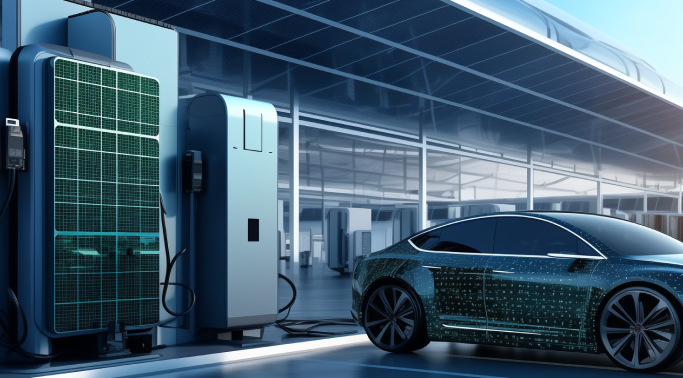EV Charging Management System
Taiwan’s 2050 net-zero carbon target sets progressive goals for electric vehicle (EV) adoption: 30% of new vehicles sold to be electric by 2030, 60% by 2035, and 100% by 2040. Meanwhile, the international EV100 initiative has made an even bolder commitment—to achieve 100% electrification of transport fleets by 2030. However, the rapid growth of EV adoption presents new challenges that test the readiness of both government policies and industry support systems.

IWA offers a range of EV charging stations, including residential, commercial, and energy storage-integrated models. These chargers are designed for various applications—from private residential use and public metered charging to integration within solar-storage-charging systems in industrial or campus settings.

System Features
Battery Modularity
The battery module intelligently adjusts its power supply based on the building’s energy demand and works in coordination with the grid.
Highly Interconnected System
Supports the OCPP charging protocol, integrates with management systems, and is compatible with third-party platforms.
Dynamic Energy Management
The solar-charging-storage system is scalable and cost-effective. It can interact with building management systems to enable dynamic energy load management.
Multi-Energy Integration Platform
Integrates grid power, solar energy, and electricity stored in battery modules into a single platform to enhance energy conversion efficiency.
Pain Points and Benefits
EV Charging Demands
- Overload and Safety Issues
- Upgrade Challenges in Aging Buildings
- Rising Energy Costs
Smart Charging
Energy Optimization System
- Distribute electricity demand during peak hours
- Prevent overloads and power outages for enhanced safety
- Avoid penalties from exceeding contracted power capacity
- Optimize the use of existing on-site power infrastructure
IWA System Sturcture
